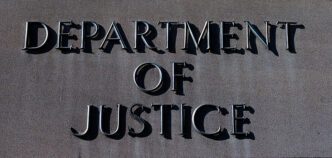Michael Tanzi is scheduled for execution at Florida State Prison on Tuesday evening for the 2000 abduction and murder of Janet Acosta, a production worker at The Miami Herald. Acosta was carjacked during her lunch break, beaten, robbed, and ultimately strangled, with her body left abandoned on an island in the Florida Keys. This execution marks the third death row inmate to be executed in Florida this year, with an additional execution planned for May 1 under warrants authorized by Governor Ron DeSantis.
Court documents reveal that on April 25, 2000, Acosta was seated in her van during her break when Tanzi approached her, requesting a cigarette before attacking her. He threatened her with a razor blade, forcibly drove her south to Homestead, bound and gagged her, and stole $53 along with her bank card. They proceeded to Tavernier in the Florida Keys, where Tanzi used her bank card to withdraw additional funds.
According to state records, Tanzi purchased supplies at a hardware store and then decided to murder Acosta. He drove to a secluded area in Cudjoe Key, informed her of his intentions, and strangled her, using duct tape to silence her cries.
When Acosta failed to return from her break, friends and colleagues notified the authorities, leading them to her van in Key West. Tanzi later confessed and directed the police to where Acosta’s body was located.
Tanzi was convicted of multiple charges, including first-degree murder, carjacking, kidnapping, and armed robbery, and received a unanimous death sentence from a Monroe County jury. Despite several appeals, none have been successful, including his most recent claim that execution would cause undue pain due to his obesity and sciatica, which the Florida Supreme Court dismissed.
Earlier this year, Florida executed two other convicts. Edward James, 63, was executed for the murder of an 8-year-old girl and her grandmother, while James Dennis Ford, 64, was executed for killing a couple in front of their young child.
The Societal Shift
- The execution highlights ongoing debates surrounding the death penalty, affecting public opinion on capital punishment’s role in justice.
- For the community, the case underscores concerns about public safety and the measures in place to prevent violent crimes.
- The legal proceedings and appeals process illustrate the complexities and timeline of justice, influencing perceptions of judicial efficiency.
- Victim advocacy groups may use this case to emphasize the importance of support systems for victims’ families and the impact of violent crime.
- This case may prompt discussions about the factors contributing to violent crime, leading to potential policy changes or community initiatives aimed at prevention.






